[London] London Buses - Discussion and Photos
-
Hello everyone! Starting a new thread to share photos from the four months I spent in London. Will try to be as informative as possible; queries and comments welcome and I will try to answer them as much as I can.
Cheers!
-
Introduction
There are over 8,000 buses operating on some 700 routes serving 19,000 stops within London. All bus services are operated by a variety of private operators under close control of Transport for London, the transport authority under the Mayor of London's office. Amongst others, TfL regulates
- the livery of buses (must be all-over red or predominantly red)
- bus types: age, specification; wheelchair accessible, dual door, straight staircase, emission standards, on-board equipment (iBus, the Next stop announcement and display system; and design and font of roller destination blinds. Electronic destination signs are not allowed).
- bus routes, frequency and Peak Vehicle Requirement (PVR - minimum number of vehicles which must be deployed on each route during peak hours)
- fares (common fare system using the Oyster card)In addition, TfL is responsible for the maintenance and provision of bus shelters, providing integrated journey planners and travel information on the TfL website, as well as publishing maps including the famous Spider Maps showing bus routes originating from every Tube station in London.
Services are run by the operator on a contract basis, which are tendered and renewed every 5 years. Each contract specifies the minimum service levels that the operator must meet as well as the type of buses that should be deployed, whether double deck, single deck or articulated.
Fares
Transport in London can be very expensive. Single trip bus tickets cost 2 pounds (S$4.20) and is only valid for one ride not including transfers. Most Londoners travel with the Oyster card, with which each ride is a flat fare of 1.20 pounds regardless of distance. A automatic day cap of 3.90 pounds applies for bus-only trips made on the Oyster Card; thus, after taking 3 bus rides, the 4th ride costs 30p, and subsequent rides are free.
In comparison, Tube fares are far more expensive. Unlike buses, Tube fares are charged by zone, with different fares for peak and off-peak travel. Within central London (Zone 1), a tube ride costs 1.80 pounds. 2.40 pounds can get you to Zone 6 during off peak, while during peak hours it can be as much as 4.20. An automatic day cap also applies for bus & tube rides, with prices starting from 7.20 pounds peak and 5.60 pounds off peak (Zones 1 & 2 only). Cash tube fares are 4 pounds minumum - that's S$8.40 a ride!
When boarding a bus, passengers must board through the front door touch in with their Oyster cards on a single entry reader beside the bus driver. There is no need to touch out as the fare is a flat rate regardless of distance. Within Central London, passengers who wish to pay cash must purchase their tickets through vending machines at the bus stop, so as to reduce the dwell time of buses if bus drivers had to accept cash payment on board. On routes operated with Bendy buses, passengers can board from any doors but must touch in their Oyster cards on the readers at each door. Any passenger who travels on buses or the Tube without a valid ticket or a validated Oyster card is subjected to prosecution and a 50 pound penalty fare.
-
[edit] in conjunction with an increase in the Value Added Tax (VAT, the equivalent of our GST here) from 17.5% to 20%, fares on TfL services have increased w.e.f. January 2011. Bus fares are now 1.30 pounds (up 10p), Tube Zone 1 fares 1.90 pounds (up 10p), and Zone 1-2 Day Cap 6.60 pounds (up 1 pound).
-
London's Bus Operators
1. Abellio
The newest brand name to appear on the London bus scene, Abellio has its roots in what used to be Travel London (formed in 2004). In 2009, National Express group which owned the companies sold them to NedRailways, a subsidiary of NS Dutch Railways (Netherland's national railway company). The Abellio brand name was launched on all former Travel London buses with effect from 30 October 2009.
Today, Abellio has 411 buses operating out of 6 garages serving 65 routes.
9016 is a Volvo B7TL with Wrightbus Eclipse Gemini 10.6m body, operating Route 188 on Waterloo Bridge on an exceptionally clear and sunny day.

Possibly the most iconic and representative of new bus purchases in London over the past two years, 9506 is an Alexander Dennis Enviro 400 10.1m passing by Marble Arch. The registration prefix of SN59 tells you that the bus was registered between September 2009 - February 2010.

Another classic of London streets is the Dennis Trident, this one carrying an Alexander ALX400 9.9m body.

Another Trident drives past the quintessential London landmark, the Big Ben.

-
2. Arriva
As one of the largest bus operators in London, Arriva was at one point in time operating the most number of contracts to TfL, although this has been superseded by the Go-Ahead group. It now operates more than 1,400 buses across 115 routes. Operations are grouped under two distinct registered companies, Arriva London North and South, although there is no distinction between the fleet in terms of livery or fleet numbering. Arriva London is part of the multinational public transport company Arriva plc., headquartered in the UK but owned by German national railway Deutsche Bahn (recall that Abellio is owned by Netherland's national railway company as well).
Arriva has demonstrated a strong preference for DAF/VDL vehicles, as evident from the substantial fleet of this make. The DAF DB250LF comes in Alexander ALX400, Wrightbus Pulsar Gemini as well as Plaxton/Transbus President bodyworks, and are given DLA, DW or DLP fleet prefixes respectively. Shown here is a 1999-make DLA211, operating Route 76 on Waterloo Bridge.

DLA313 on Route 159. Notice the big hub reduction axles on the rear.

The DAFs also came in 10.3m Wrightbus Pulsar Gemini bodyworks, such as this DW with a new, all-red version of the livery.

In contrast, DW126 wears an older version of the livery, with white "cow horns", yellow lines and a big logo.

The latest incarnation of the DAF comes in the form of the Wrightbus Gemini 2 DL Integral, purchased between 2009 - 2010. Although the bus is branded as a Wrightbus integral, it is constructed with VDL's chassis modules. These buses are thus given the DW class prefix like the other DAFs, but with fleet numbers starting from DW2xx.

Rear view of a Wrightbus Gemini 2. In comparison Singapore's rear design is a disappointment!

Apart from the DAF/VDLs, Arriva also purchased a number of Volvo B7TLs. As you might have guessed by now, those with ALX400 bodies are classed VLA while Wright-bodied ones are classed VLW.
VLA73 was spotted operating Route 2 and Route 176 on separate occassions.


VLA177 on Route 159. Without looking at the fleet number it is indeed hard to tell the DLAs and VLAs apart on the same route!

Wrightbus version of the B7TL, wearing the new livery.

VLW134 of Route 168 is followed by DW82 on Route 59, both of which wearing the old version of the livery.

Having never bought Tridents in the past, Arriva decided to nevertheless purchase a batch of Alexander Dennis Enviro 400s between 2008 to 2010. T15 is an 2008 example and still wearing the old style livery.

T149 is so new that it's not even recorded in my 2010 fleet book! The registration LJ60 again tells that the bus is registered after September 2010.

-
3. East London Bus Group
In stark contrast to Arriva which has never bought Tridents, East London's double deck fleet is almost entirely dominated by the Trident until as recent as 2008 when Polish-built Scania Omnicity buses were purchased. At present East London is owned by Stagecoach Group, which has a dominant presence and operation in many other UK towns but interestingly not as strong in the capital city. As its name suggests, East London's routes primarily cover the East and South-east regions of London, including the Docklands, Greenwich and Canary Wharf districts. 3 brands are operated under the East London umbrella, mainly East London, Selkent (South East London & Kent Bus Company) and Thameside.
East London adopts, or rather inherits, a 5-digit fleet numbering system used by Stagecoach across UK; however, for a period of time when the company was sold out of Stagecoach hands new numbers clashed with the numbers used by Stagecoach elsewhere.
The company has recently rebranded to Stagecoach in London and the new identity has started making its way onto the buses' liveries.
The bus involved in the July 7 2005 bombings was a East London Trident 17758 on Route 30.
Amongst one of the most prominent routes operated by East London in Central London is the 15, reknowned for also running Heritage Routemasters in parallel. Two Tridents run side by side in front of Trafalgar Square.

Route 30 operates a large amount of old Tridents, some dating as far back as 1999.


Route 205 is run almost exclusively with brand new Scania Omnicity N230UD 10.8m buses. These buses may look stylish but they are running the same engines as Singapore's K230UB, and thus sound exactly the same to what we have back home.

-
4. First London
First London operates the third-largest number of TfL bus routes, after Go-Ahead and Arriva. Its area of responsibility mainly covers West and Northwest London. Operations are split between three subsidiary companies, First Capital East, First Capital North and First Centrewest, although all share a common fleet numbering and livery scheme. First Capital East and First Capital North are divisions that were formerly Capital Citybus before it was acquired by First Group in 1997.
The parent company, FirstGroup plc is one of the largest transport companies in the UK, and the biggest bus operator. It also operates national rail services under First Capital Connect and First Great Western and a whole array of local bus companies in many UK towns and cities. The group lent its name to Hong Kong's New World First Bus, in which it owned a 26% stake before it was sold to NWS Holdings in 2000.
Like other London operators, First London also jumped on the bandwagon in purchasing these Alexander Dennis Enviro 400s.

TN33184 is a Transbus Trident clad in a Transbus President 9.9m body, and with the livery repainted to match current all-red standards.

...while TNA33354 demonstrates the more traditional livery style of yellow and white. The A in the fleet code obviously stands for the Alexander ALX400 body.

Also sporting the more traditional livery is this Volvo B7TL in Wrightbus Eclipse Gemini bodywork.

Route 607 is a limited stop version of a long haul route connecting White City Bus Station in Shepherd's Bush to Uxbridge, located in the far western end of London (even further west than Heathrow Airport). It runs parallel to Route 207, also operated by First but using bendybuses. More on bendybuses in subsequent posts that follow.

And finally, a Wrightbus Eclipse Gemini 2 DL Integral.

-
Fascinating pictures.
Did you spot the Volvo B5L hybrid there?
-
5. Go-Ahead Group
Go-Ahead group currently holds the position of largest bus operator in London, running a total of 115 routes on contract to TfL. Interestingly the company grew through several rounds of acquisitions, but the acquired companies still exist as subsidiaries. It is thus not surprising to see buses bearing their former identities of London Central (acquired in 1994) and London General (acquired in 1996), although it was only as recently as 2008 that a unified corporate identity for Go-Ahead's buses was unveiled.
Again most typical of recent purchases is the Alexander Dennis Enviro 400, classed very simply with the E prefix.

Older vehicles include these Volvo B7TLs in Plaxton President bodyworks, classed PVL.


A number of B7TLs are also in Wright bodywork of course

And here's one of the very rare examples of buses that received all-over advertising in London.

-
Originally posted by vicamour:
Fascinating pictures.
Did you spot the Volvo B5L hybrid there?
Yes I did! Coming in a later post :P -
6. Metroline
Our good friend Metroline needs no introduction. Privatised in 1994 and acquired by ComfortDelgro in 2000, Metroline operates 82 routes from 11 garages concentrated mainly in the north and north-west districts. Metroline's buses can be easily identified from the blue skirt on their liveries, the colour combination of which make them a personal favourite for me; however, since June 2009 the blue skirt has been dropped from new bus purchases as well as repainted vehicles - a pity indeed, as the blue skirt often provides a good visual respite from the sea of red on the streets. Of late the ComfortDelgro logo was added to the company name on the livery, identifying its affiliation to its Singapore owners; at the same time attracting the attention of many of my Singaporean student friends puzzled about the familiar name's appearance here.
Fleet numbers in Metroline are composed of a class prefix and a running number; however unlike Go-Ahead whose numbers start from 1 from each vehicle class, Metroline's run consecutively from one order to the next. Therefore the same vehicle class purchased across different batches (such as the VPL) can occupy discontinuous range of numbers, interrupted by other vehicle classes in between.
Amongst the early vehicles of Metroline is this 9.9m Dennis Trident dating back from 1999. Metroline's class prefix is very self-explanatory; in this case TA of course means Trident Alexander...

... while adding an L signifies that this is a longer, 10.5m version - TAL121

The Tridents came in Plaxton President bodies as well, over several generations and variants. This is one of the earliest model with bonded windows, repainted into the new all-red colour scheme.


...while this is a later version with rubber-mounted windows.

But perhaps the model which Metroline is best known for is really its Volvo B7TL with Plaxton President bodies, in VP (10.0m) and VPL (10.6m) classes.
On my home service 390 - much like the Singaporean 390 in the past, this one is quite an anomaly in service number range amongst the services plying the heart of Central London.

At Marble Arch, a VP on Service 6 leads a VPL behind. Spot the difference!

A line of VPs laying over on Service 98 at Holborn. There are few bus stations around central London, so bus stands (the equivalent of our roadside terminal, but without any form of timekeeper or control office) such as these are very common. Buses do not pick up nor set down passengers from such bus stands; they have to proceed to/from the first and last stop of the route.

What's a London bus operator without Alexander Dennis Enviro 400? TE681 captured at Euston bus station.

And TE977, from a more recent batch sporting the new livery style.

But my personal favourite remains the SELs - Scania N230UD in very stylish East Lancs Olympus 10.8m bodies. A very small batch of 26 was purchased, almost exclusively deployed on Route 7.

Comfortdelgro's headquarter address in London

-
7. Transdev
The last London bus operator I'd like to introduce is Transdev. Owned by the Transdev Group of France, Transdev London had its origins in London United Busways (which is still its legal trading name today). The company also absorbed what was London Sovereign in 2003, but both United and Sovereign brandings were retained until 2006 when the name Transdev was launched. Elements of the old livery remains, in the form of either a grey skirting or a white roofline or both.
Do note that the above posts do not constitute an exhaustive coverage of London's bus operators; nevertheless these are the main operators with a substantial share of operations in Central London. There are many other smaller operators around particularly in the suburban areas which I have yet had the chance to see and photograph.
Examples of older liveries in use include this Volvo B7TL in Wrightbus Eclipse Gemini body and Dennis Trident in ALX400 body.


The East Lancs body can be found on two different chassis within the Transdev fleet: the Myllenium Vyking body on the Volvo B7TL...

and the much more aesthetically-pleasing OmniDekka found on the Scania N94UD, essentially the same bodywork with a Scania front.

In more recent years, Transdev was a forerunner in bringing in, in large quantities, the Polish-built Scania Omnicity N230UD buses. To date more than 200 of these buses have been purchased over a span of 2 years!


-
Special Feature: Volvo B9TLs
Just as Singapore welcomes its first Volvo B9TL with Wrightbus Eclipse Gemini 2 bodyworks into its family, London is also seeing a steady inflow of this relatively new model onto its streets. The B7TL/Wrightbus combination has long formed the staple of London operator's purchases, but as emission control standards become stringent the Euro V B9TL/Gemini 2 combination is a breath of fresh air, both literally as well as with its updated bodywork design.
Go-Ahead purchased its units from 2009 onwards, but unfortunately chose to continue its fleet numbering from previous B7TL series.

First opted for the unconventional bonded window on its bodywork, eschewing the traditional rounded windows and certainly injecting a sense of modernity onto the buses. More units are on order to replace older buses and articulated buses on its other routes.


Following in the lead of its sister back home Metroline placed orders for two small batches of the B9TLs, all registered in 2010. It's worth noting that these are the first Wright-bodied vehicles in Metroline, having traditionally only purchased from Alexander/Plaxton; just as the Singaporean examples are the first Wright-bodied buses with SBS Transit! Unfortunately these units were purchased after the livery was revised, so we could never see them painted with the iconic blue skirt.


How I wished Singapore's version would have this rear.

-
Enviro 200
Before you think London was all about double decks (actually that's partially true where Central London is concerned), there are plenty of single deck buses being operated on lower-demand routes as well. Like its bigger cousin the Enviro 400, the Alexander Dennis Enviro 200 Dart can almost be considered as the "national" midibus of Britain, with large numbers ordered by operators across the country. Several London operators run this model in varying configurations of length, with both single and dual door varieties.
Abellio:

East London: operating feeder service D3, D for Docklands

Metroline:

First London: These buses on RV1 replace a batch of 12m rigid Citaros which have been cascaded for service outside of London, to fill the gap until a new batch of Hydrogen fuel-cell buses arrive from December 2010. The buses were initially a new order for another depot.

Transdev: Family photo with an Enviro 400 following behind at South Kensington

Nearside showing dual-door configuration

-
Dennis Dart
Before there was the Enviro 200, there was the Dart. While most Darts in London come in the standard Plaxton /Plaxton Pointer 2 bodies, there are some variations too.
Plaxton Pointer:

Plaxton Pointer 2:
London General


Still in the former Blue Triangle livery

Metroline:


Metrobus, another operator in South-East England who runs a few TfL routes as well

-
Dennis Darts
More bodywork variations on the Darts...
Alexander ALX200 operated by Arriva and East London:


Marshall Capital body operated by First:



Caetano Nimbus body operated by Abellio:

What seems to be a hospital shuttle service:

Optare/East Lancs Esteem operated by Metrobus and Go-ahead


MCV Evolution operated by Metroline



-
That's very informative! ^^
Looking forward to see the Scania Omnicities
-
Originally posted by sv966:
In more recent years, Transdev was a forerunner in bringing in, in large quantities, the Polish-built Scania Omnicity N230UD buses. To date more than 200 of these buses have been purchased over a span of 2 years!


The design reminds me a bit of SBS7888K.Since ComfortDelgro has bought Alexander Dennis Enviro for MetroLine, I hope they can also buy some Alexander Dennis Enviro 500 and 200 in future. And also using East Lancs and MCV bodies for their new buses in future.
-
As for RV1, there's already at least one new Hydrogen bus in.
(Public domain photograph by citytransport.info. Also see this video - they sound real weird!)That is the first of eight buses, costing one million pounds each, part of the HyFLEET:CUTE project. Built by Wrightbus on a modified Pulsar 2 body with a VDL SB200 chassis.
Edited to add links.
-
Thanks! The first unit was scheduled for launch on 18 Dec 2010, but I waited for it on Waterloo Bridge for an hour on 29 Dec and it never showed up. Only after I got back to Singapore that I found out it never entered service until late January!
-
wow..nice pic of all tis buses in london.i feel so jealous wen i see their buses..all look so stylish and nice especially the last pic of the hydrogen bus.looks so nice and unique!!Seriously hope tat sg can hav such buses here but too bad we cant :(
And i got shocked wen i saw one of the pics above of the unique Metroline Scania N230UD..i didnt even know tat such a model existed in the Metroline fleet.cuz i hav nvr heard of it or seen any pics of it b4..Very nice and unique looking bus.Anyway i really hope to see more photos of tis nice buses here. :)) -
Originally posted by sv966:
6. Metroline
Our good friend Metroline needs no introduction. Privatised in 1994 and acquired by ComfortDelgro in 2000, Metroline operates 82 routes from 11 garages concentrated mainly in the north and north-west districts. Metroline's buses can be easily identified from the blue skirt on their liveries, the colour combination of which make them a personal favourite for me; however, since June 2009 the blue skirt has been dropped from new bus purchases as well as repainted vehicles - a pity indeed, as the blue skirt often provides a good visual respite from the sea of red on the streets. Of late the ComfortDelgro logo was added to the company name on the livery, identifying its affiliation to its Singapore owners; at the same time attracting the attention of many of my Singaporean student friends puzzled about the familiar name's appearance here.
Fleet numbers in Metroline are composed of a class prefix and a running number; however unlike Go-Ahead whose numbers start from 1 from each vehicle class, Metroline's run consecutively from one order to the next. Therefore the same vehicle class purchased across different batches (such as the VPL) can occupy discontinuous range of numbers, interrupted by other vehicle classes in between.
Amongst the early vehicles of Metroline is this 9.9m Dennis Trident dating back from 1999. Metroline's class prefix is very self-explanatory; in this case TA of course means Trident Alexander...

... while adding an L signifies that this is a longer, 10.5m version - TAL121

The Tridents came in Plaxton President bodies as well, over several generations and variants. This is one of the earliest model with bonded windows, repainted into the new all-red colour scheme.


...while this is a later version with rubber-mounted windows.

But perhaps the model which Metroline is best known for is really its Volvo B7TL with Plaxton President bodies, in VP (10.0m) and VPL (10.6m) classes.
On my home service 390 - much like the Singaporean 390 in the past, this one is quite an anomaly in service number range amongst the services plying the heart of Central London.

At Marble Arch, a VP on Service 6 leads a VPL behind. Spot the difference!

A line of VPs laying over on Service 98 at Holborn. There are few bus stations around central London, so bus stands (the equivalent of our roadside terminal, but without any form of timekeeper or control office) such as these are very common. Buses do not pick up nor set down passengers from such bus stands; they have to proceed to/from the first and last stop of the route.

What's a London bus operator without Alexander Dennis Enviro 400? TE681 captured at Euston bus station.

And TE977, from a more recent batch sporting the new livery style.

But my personal favourite remains the SELs - Scania N230UD in very stylish East Lancs Olympus 10.8m bodies. A very small batch of 26 was purchased, almost exclusively deployed on Route 7.

Comfortdelgro's headquarter address in London

Eh did anyone notice the last pic of the bus rims??I jus noticed after observing the pic clearly tat the axles has the exact same band tied between the axles which the sbst buses also nw currently has..So the sbst buses followed tis style from their london counterparts?? :P -
Photos taken by me in 2009, enjoy.

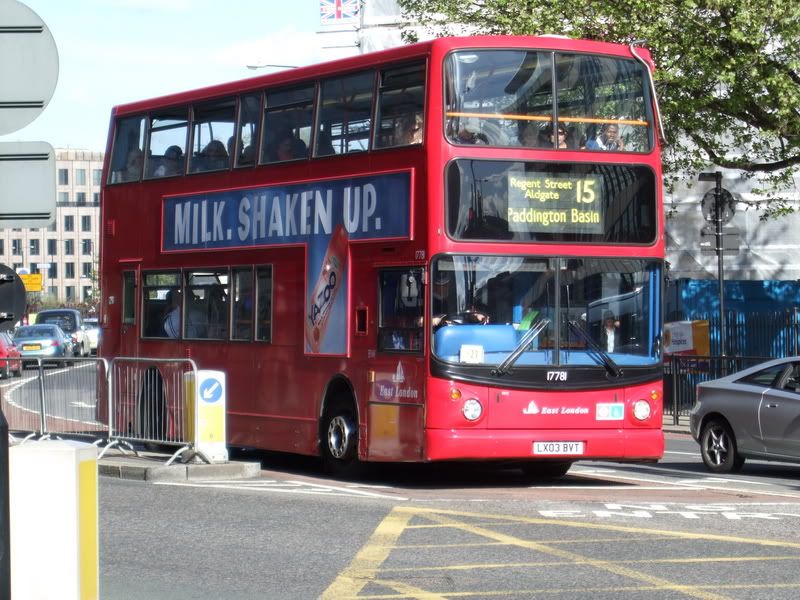
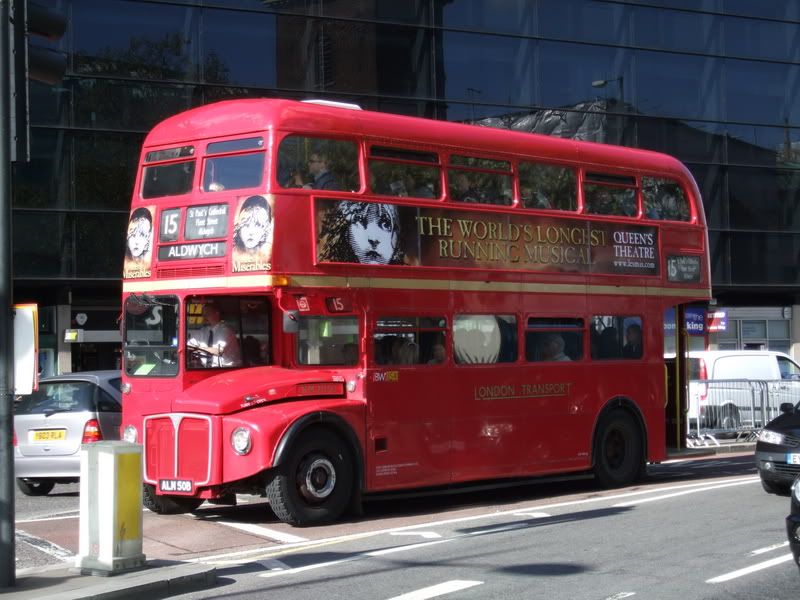
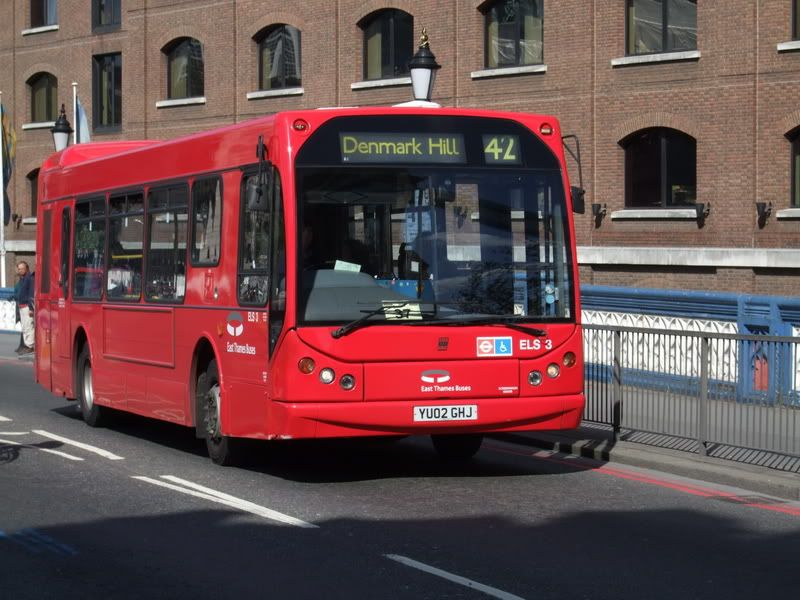
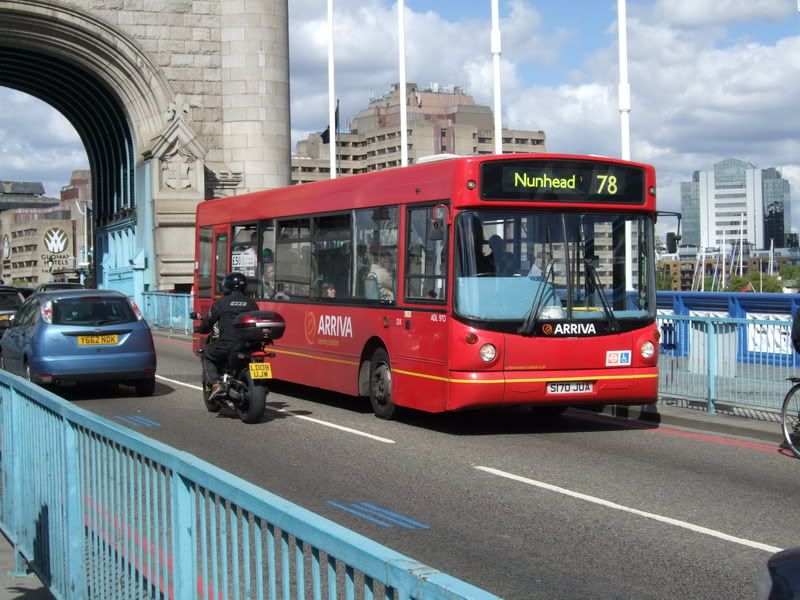
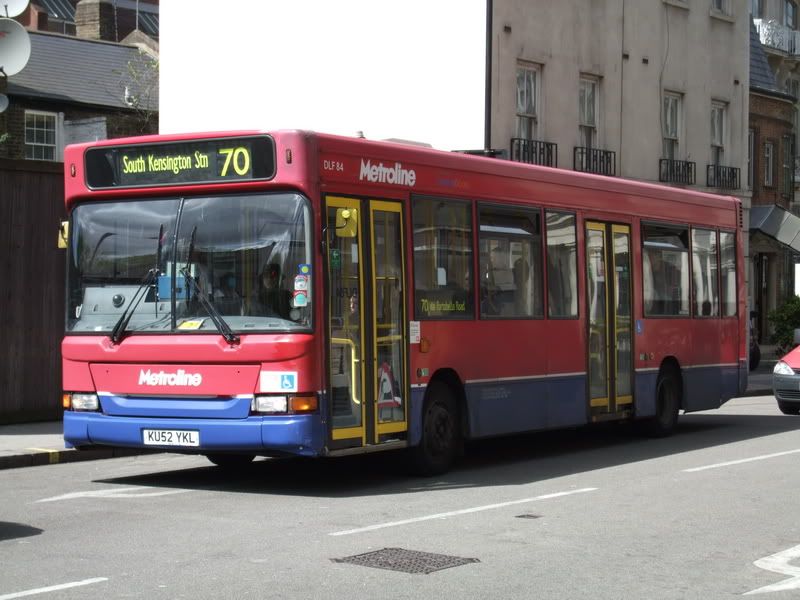
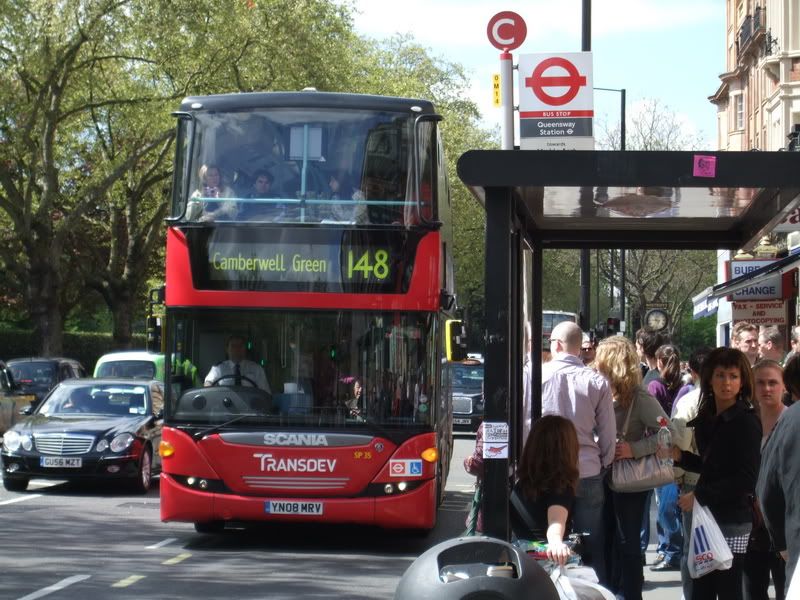
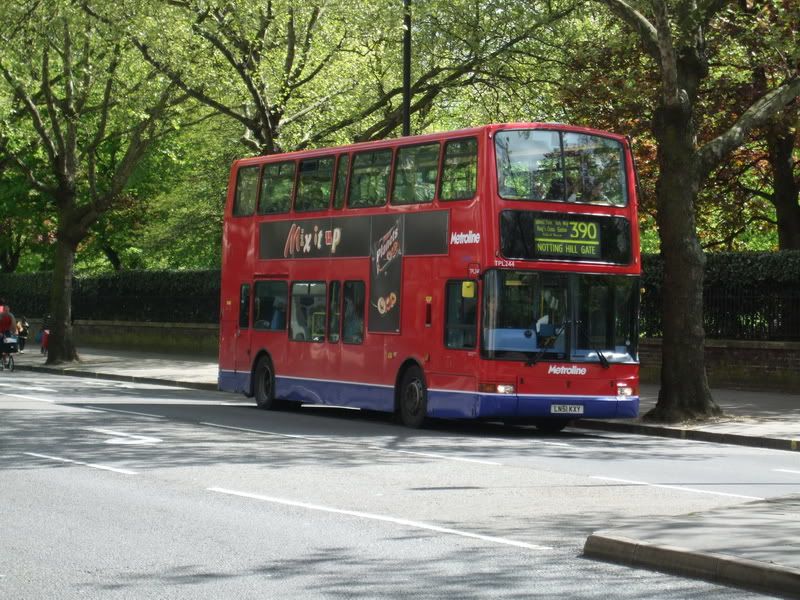
-
The Optare Esteem Darts remind me of our SMRT Volgren buses. Could that be where SMRT got the inspiration?
-
Originally posted by Raraken:
The Optare Esteem Darts remind me of our SMRT Volgren buses. Could that be where SMRT got the inspiration?
Not a chance, the Optare Esteem was introduced by Optare in 2006, while the volgrens with its "smile" was introduced uniquely to tibs in 1999 to the hinos and o405s


